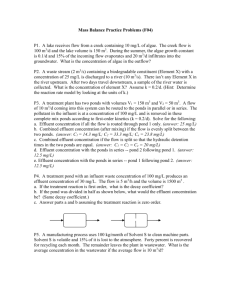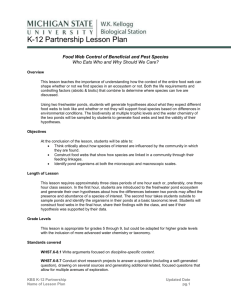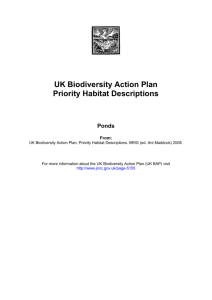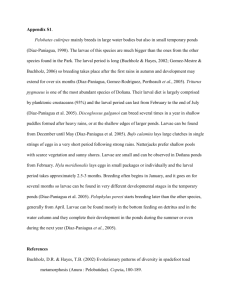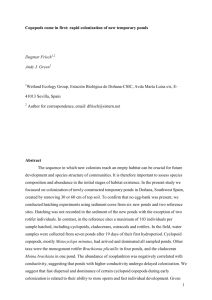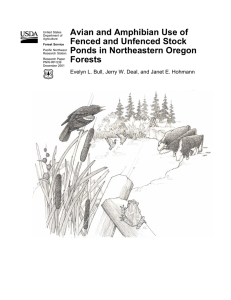doc - Freshwater Habitats Trust
advertisement
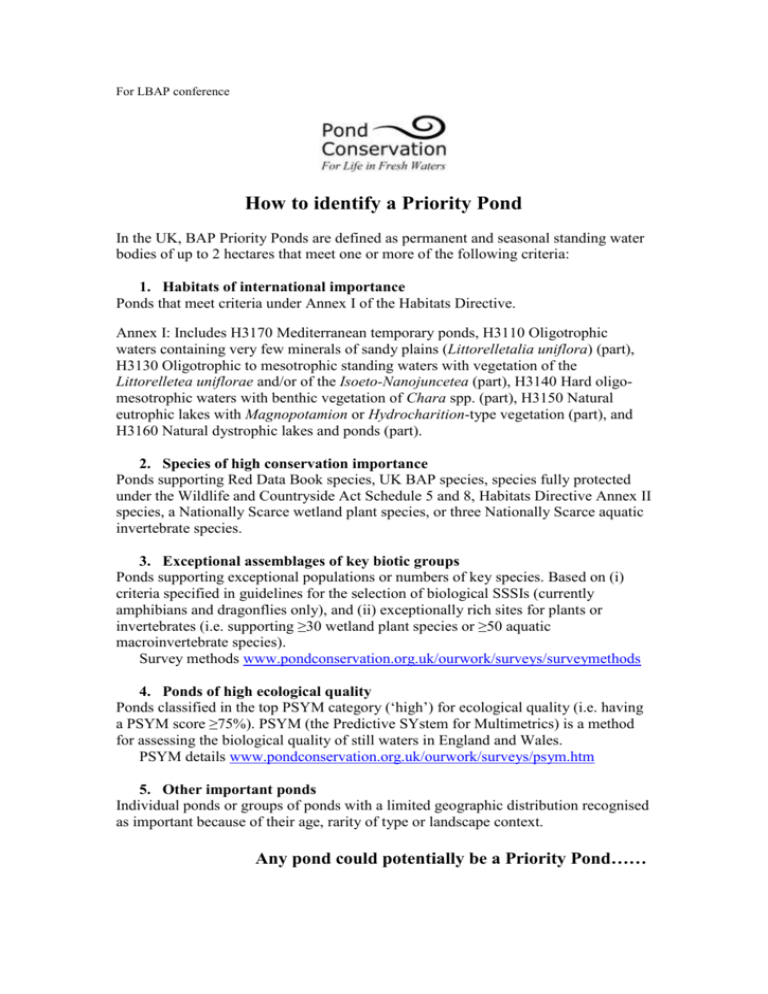
For LBAP conference How to identify a Priority Pond In the UK, BAP Priority Ponds are defined as permanent and seasonal standing water bodies of up to 2 hectares that meet one or more of the following criteria: 1. Habitats of international importance Ponds that meet criteria under Annex I of the Habitats Directive. Annex I: Includes H3170 Mediterranean temporary ponds, H3110 Oligotrophic waters containing very few minerals of sandy plains (Littorelletalia uniflora) (part), H3130 Oligotrophic to mesotrophic standing waters with vegetation of the Littorelletea uniflorae and/or of the Isoeto-Nanojuncetea (part), H3140 Hard oligomesotrophic waters with benthic vegetation of Chara spp. (part), H3150 Natural eutrophic lakes with Magnopotamion or Hydrocharition-type vegetation (part), and H3160 Natural dystrophic lakes and ponds (part). 2. Species of high conservation importance Ponds supporting Red Data Book species, UK BAP species, species fully protected under the Wildlife and Countryside Act Schedule 5 and 8, Habitats Directive Annex II species, a Nationally Scarce wetland plant species, or three Nationally Scarce aquatic invertebrate species. 3. Exceptional assemblages of key biotic groups Ponds supporting exceptional populations or numbers of key species. Based on (i) criteria specified in guidelines for the selection of biological SSSIs (currently amphibians and dragonflies only), and (ii) exceptionally rich sites for plants or invertebrates (i.e. supporting ≥30 wetland plant species or ≥50 aquatic macroinvertebrate species). Survey methods www.pondconservation.org.uk/ourwork/surveys/surveymethods 4. Ponds of high ecological quality Ponds classified in the top PSYM category (‘high’) for ecological quality (i.e. having a PSYM score ≥75%). PSYM (the Predictive SYstem for Multimetrics) is a method for assessing the biological quality of still waters in England and Wales. PSYM details www.pondconservation.org.uk/ourwork/surveys/psym.htm 5. Other important ponds Individual ponds or groups of ponds with a limited geographic distribution recognised as important because of their age, rarity of type or landscape context. Any pond could potentially be a Priority Pond…… …….even ponds that are shaded, dry out, are in urban areas or look unsightly, could be Priority Ponds. The key point is that ponds need to be adequately surveyed in order to assess their status, see diagram below for a flow chart of ‘best practice for assessing priority ponds’. Best practice for assessing priority ponds For more information about Priority Ponds and the Pond Habitat Action Plan see www.pondconservation.org.uk, email info@pondconservation.org.uk or call Pond Conservation on 01865 483249.

